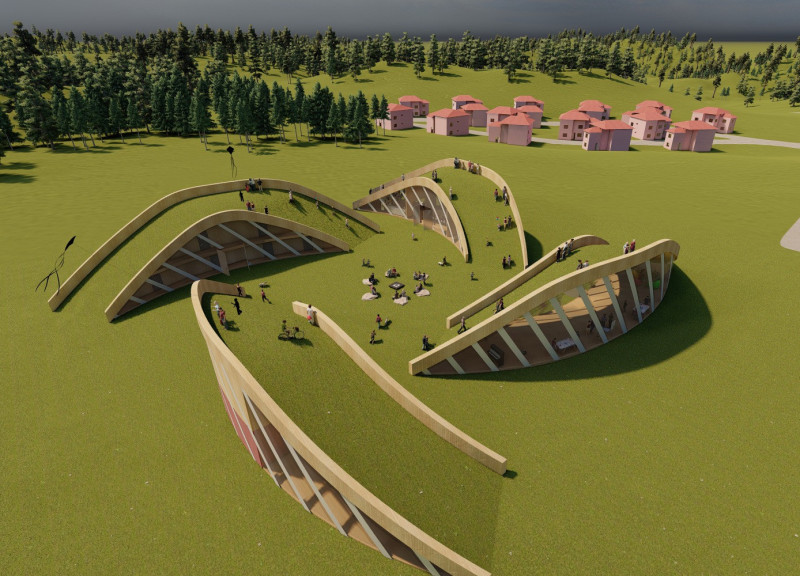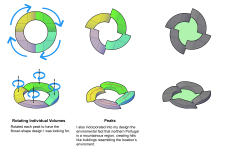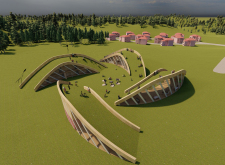5 key facts about this project
At its core, this architecture serves as a multifunctional space, catering to community needs while maintaining a dialogue with its surroundings. The spiral elements reflect a keen understanding of natural growth patterns, resulting in an organic layout that allows for fluid movement and interaction among users. By integrating these principles into the design, the project encourages a relationship between the interior space and the exterior environment, fostering a sense of belonging and unity within the community.
The architectural design is marked by its unique structural elements, where each volume is thoughtfully placed to create a series of interconnected spaces. These structures twist and turn, reminiscent of the petals of a flower, providing an engaging visual experience. The building's form is designed not just for aesthetic purposes, but also to promote functionality. The layout facilitates the movement of people, creating areas for gathering, relaxation, and various community activities. The open spaces within the design are intended to inspire interaction, making it a central hub for social engagement.
The project employs sustainable materials that highlight its commitment to ecological design principles. Engineered wood is likely used for the structural components, providing durability while maintaining a warm and inviting ambiance. Large glass panels are integrated into the design, allowing for ample natural light to fill the interior spaces, which not only enhances the atmosphere but also reduces reliance on artificial lighting. Additionally, green roofs are proposed, contributing to biodiversity while offering natural insulation and improving the building's energy efficiency.
Attention to detail is evident throughout the project. The careful consideration of materiality ensures that the architecture responds to environmental conditions while remaining accessible and inviting. The design’s commitment to sustainability is reflected in its choices, from the selection of materials to the consideration of natural light and ventilation. The project not only aims to establish a striking visual identity but seeks to create a functional environment that supports community well-being.
Another notable aspect of this architectural design is its ability to adapt to the landscape. The undulating forms resonate with the natural topography of Northern Portugal, creating a seamless integration with its surroundings. This approach not only respects the existing landscape but also enhances the overall experience of being within the space.
The project presents a fresh perspective on architecture that prioritizes ecological sensibility while fostering community interactions. By referencing the natural world, it communicates the importance of sustainability in contemporary design. The unique spiral formation not only serves as a visual metaphor for growth and connection but also spatially articulates the architecture's adaptability and user-centric focus.
For those interested in exploring the nuances of this architectural project, a closer look at the architectural plans, architectural sections, and various architectural designs will provide deeper insights into the underlying concepts and innovative approaches. Engaging with the project presentation is encouraged to fully appreciate the creative ideas that have shaped this remarkable design.


























